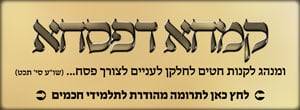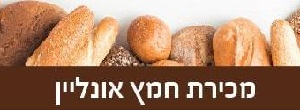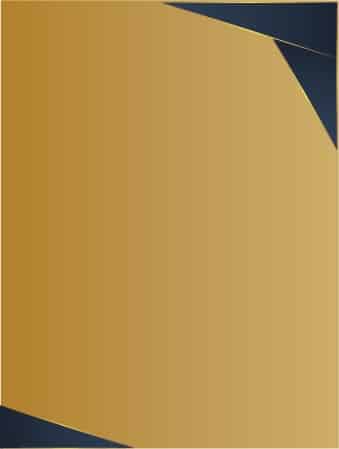BS”D
Question
My neighbor left his succo standing after Succos. The sechach was not tied very securely and one day, about three months after Succos, a strong gust of wind blew his sechach into my window and the sechach broke the glass. We had a question whether he is liable for the damage since this was an unusual wind and one is not liable for unusual winds. However, it was to be expected that eventually an unusual wind would blow since occasionally there are unusually strong winds and the sechach was not tied sufficiently well to withstand a strong wind of this kind. Is he liable?
Answer
In order to answer the question we have to classify the damage. The first Mishna in Bava Kama states that there are four classes of damage mentioned by the Torah. One of these classes is fire. The Gemara subsequently states that the salient feature of fire is that it damages only with the aid of an external source, namely, the wind. Therefore, the Gemara says that if one places an object on his roof and the wind blows it into an object which is damaged, the owner of the damaging object is liable since what happened is similar to fire damage. Therefore, it would seem that your neighbor is liable just like anyone who makes a fire that eventually damages with the aid of the wind.
However, as you mention in your question, the wind was unusual and the Gemara says that one is only liable for common winds. Thus, we have to decide whether this wind can be classified as an unusual wind or not since it was to be expected.
It would seem at first that there are strict rules which decide which winds are considered unusual. Tosafos (Bava Kama 59B) cites a Yerushalmi that even a wind which does come but only occasionally is called an infrequent wind for which one is not liable. While there is a dispute among the Rishonim whether this applies to all situations or only to coals which require the wind to ignite them, nevertheless, the Chazon Ish (Bava Kama 2, 6) rules that since the dispute is undecided we cannot rule that one is liable even for an open fire that spread because of an occasional wind. This would imply that your neighbor is not liable.
However, we find a Tosefta (Bava Metsiyo 11, 5) that rules that one is liable for his wall which fell and damaged in a hurricane, if it was not originally built in conformance with construction standards. This is ruled in Choshen Mishpot (Rama 416). It seems that the difference between the two sources is that the Yerushalmi is discussing a fire which exists only for a very short period. Therefore, if a wind that could cause the fire to damage blows only occasionally, one does not need to fear that this wind will blow and cause the fire to damage. However, if one builds a wall which is meant to stand for a long period of time, one must build in a manner that meets the standards. The reason is that when one builds according to the standards there is a tacit agreement by all that the owner will not be liable for any damages.
An additional proof was brought (Beis Aaron ve’Yisroel 128, 76: Also see Shut Shoney Ribbis page 176) from an explanation of the Rif (Bava Metsiyo 25B). The Mishna (Bava Kama 61A) sets rules governing the amount one must distance his fire from his neighbor’s property. The Mishna says that if one distanced his fire in accordance with the rules of the Mishna he is not liable even if his fire broke out from his property and damaged his neighbor. The Rif asks that this seems to contradict another Mishna (Bava Basra 20B) that sets rules on how far one must distance his oven from the ceiling, floor etc. but says that even if one distanced his oven in accordance with the rules he is liable for any damages.
The Rif answers that the Mishna which rules that if one properly distanced his fire he is not liable, is discussing a fire that only burns for a short time. Therefore, if one observed the rules he is not liable. However, the second Mishna is discussing an oven, which is installed on a permanent basis.
Since the Rif restricted the first Gemara to a temporary fire we learn that one must take into account that if he wishes to keep his fire around for a long period of time, he must take precautions that will guarantee that he will not cause any damages that can result from the long-term presence of the fire. Similarly, precautions that are sufficient when one places an object in a precarious position temporarily do not suffice when the object is placed in a precarious position on a permanent basis.
An additional proof (told to me by the author of Mishnas Hamazik) can be derived from Rashi’s (Bava Kama 3B, 28A) explanation that the reason one is not liable for an unusual wind is that he is an oness i.e. that the damages were beyond his control. Obviously it is difficult to consider it beyond a person’s control to secure an object which is installed permanently.
An additional issue that we consider is whether the fact that no one ordered your neighbor to remove his sechach is a reason to free him from liability.
The reason this is an issue is that the Mishna (Bava Metsiyo 117B) rules that only if one was warned is he liable for his wall or tree that fell and damaged. The Gemara (Bava Kama 6B) explains that the distinguishing feature is that these were all built in a permitted manner and only became problematic at a later stage. Therefore, perhaps one can argue that the sechach was also originally placed in a permitted manner and the owner only becomes liable if he was warned.
However, one can differentiate between the Mishna’s case and our situation. In the Mishna’s case the wall was actually sturdy at the time it was erected and it was only later that the wall became dangerous. Since the wall’s sturdiness declined the owner must be warned to heed the change in circumstances.
However, in our situation it is not that the sechach became more insecure. Rather it was originally constructed in manner that was not fit for the long term. Proof for this differentiation can be derived from the Prisho (416, 1) and the Nesivos (307, 1) who state that when it is obvious that the wall can damage, no warning is necessary. Since it was obvious from the outset that the sechach was placed in a manner that was not suited for a long term, no warning was required.
Rav Naftoli Nussbaum agreed with the above but added that one must take into account the location of the succo. Sometimes a succo is situated in a place where even in the long term the sechach is secure, due to sheltering walls or some other circumstance.
In conclusion: If your neighbor’s sechach was left for a long period and the type of wind that caused the sechach to damage was to be expected in such a long interval, your neighbor is fully liable for the value of the damaged window (taking into account the current nature of the damaged object which may have declined from use, if it is significant).










